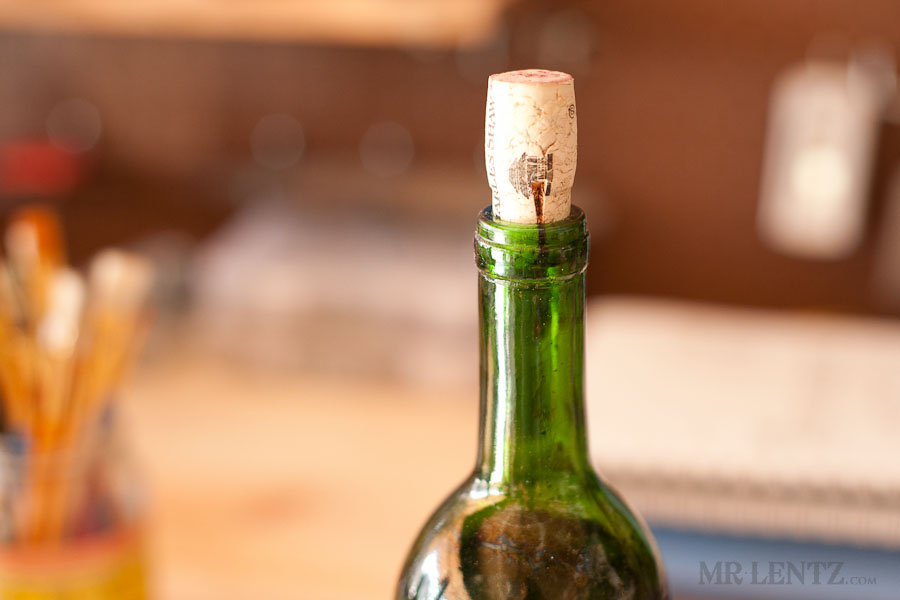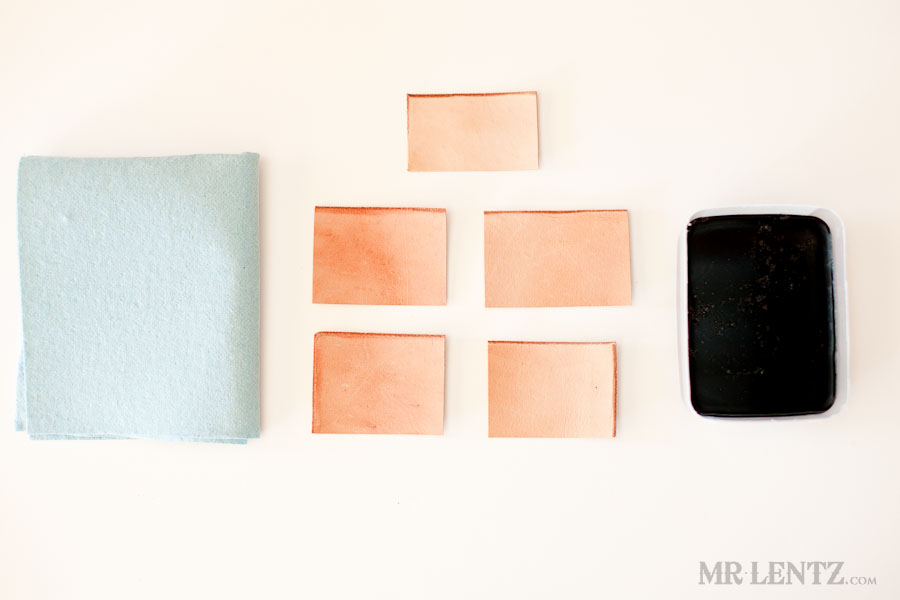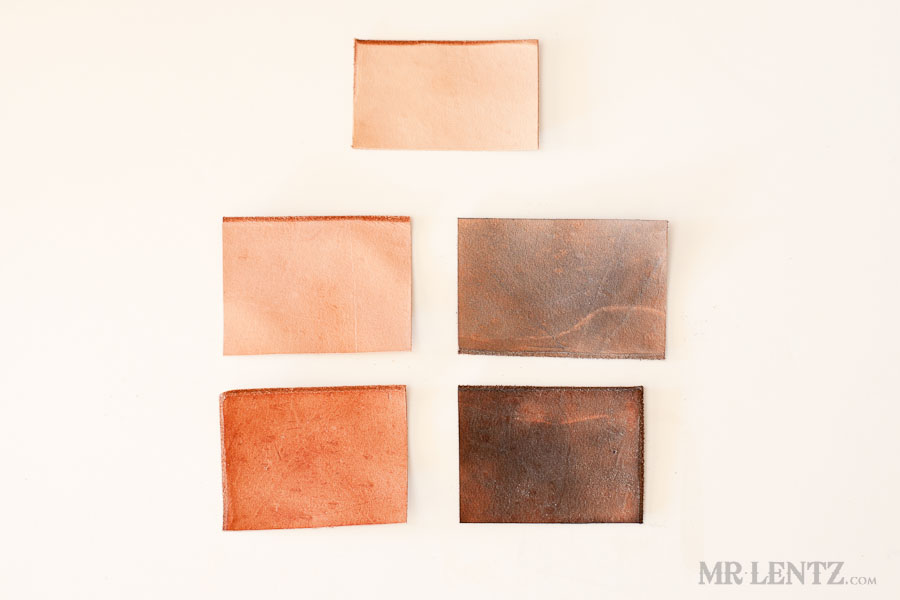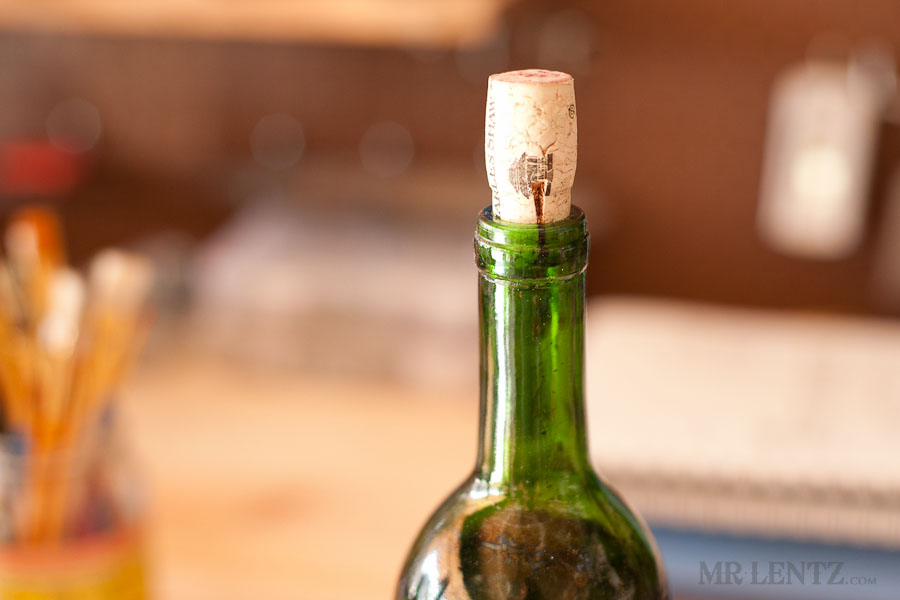Everything, Leather, Tutorials
Natural Leather Dyeing Results (Part 2)
My dye experiment turned black, started to bubble, and tried to kill me.
Over the past three weeks I had noticed a stench developing in the workshop. Something putrid. A rotten smell of death and dying…no pun intended. Not having the best of nasal capabilities I resolved to glide my nostrils within an inch of every surface around. After a few minutes it became quite apparent – my nose locked in on the bottle of “2 Buck Chuck” a Charles Shaw variety of Cabernet I had opened a week ago and stuffed with steel wool. I popped the cork back off and took a whiff.
I died… for a second.
Then neural function resumed and instinct told me to re-cork immediately. The bubbling had gone wild, something…yes something was happening in that plonk.

I cut a hole in the cork so the bottle wouldn’t explode under the building flatulent pressure, then as any man would do… I put it back on the shelf to marinate for another week or so.
And I’m glad I did…here are the results:


Wine
Eventually, after another week, the wine mixture decided to spare my sinuses and returned to a light vinegary smell. When applied to the leather, then topped with a coat of Extra Virgin Olive Oil, it produced an aged dark brown with reddish undertones. Strikingly perfect and exactly what I was hoping for.
Blackberry
The next dye to test out was the blackberry and alcohol mixture. Unfortunately there were no noticeable results. Honestly – I was hoping this would be the case, because the alcohol mixture felt so unnatural that it just felt wrong rubbing it into the leather.

Final Results: Blackberries 0 Wine 1. And the wine bottle is back on the shelf.



Almost forgot about the Henna! And rightfully so. The henna mix turned out to be a gloppy mess. It was prime territory for mold to grow, so after a week I tested it out – with no results. It didn’t work well for the leather, and out I poured it.
love these ideas for natural dyes..have heard leather dyes will work on dried gourds so am anxious to try these natural ones on gourds I’ve grown, thanks
Hi Cate – that’s an interesting idea, let us know how the gourds react to your experiments!
Wow, thank you for this, you gave me an idea!
Great Joanna! Glad I could help.
I came across your website because I’m a new Trader Joe’s employee, and tonight was given a leather holster for my utility knife. I want to dye it, and was thinking about trying a natural dye. I thought it was great you used the Two-Buck Chuck in your experiment.
I also make drinking vinegars (also known as shrubs or sharabs – one of my Google+ posts about it here – https://plus.google.com/114869214150121539635/posts/GMpYkm2nXft), in which I make a fruit-infused vinegar, then add sugar to make a syrup. The fruit in vinegar is shelf stable in a closed container – no mold grows because the vinegar is too acidic.
I’m thinking of trying a berry-vinegar concoction on my leather holster – I’ll let you know how it turns out.
Kristin – I would love to hear about your berry-vinegar dye experiment, please let me know how it goes! The Wine and steel wool actually works really well. It’s a deep dark brown, almost black with a red undertone. If there was a way to lighten it, it would be perfect – but because it is a chemical reaction with the tannins in the leather, I am not sure this is possible.
i absolutely love the effect that the wine with olive oil coat has on the leather! did you notice any changes over time, did it get lighter or brittle or anything? i would like to try this on a leather jacket, so i was just wondering if it is a good idea.
Hi Britta – Thanks, yes I think the effect is probably my favorite. Over time the only change I have noticed on a wallet is that it takes about 1 week for the vinegar smell to go away, then everything is back to smelling like leather. As far as appearances, it should get slightly darker over time with use (rubbing, oils from the hand). Also – make sure to apply some sort of wax to the leather after application, this helps the leather a lot. I use a mixture of walnut oil and beeswax – mostly walnut oil so it is easy to rub into the leather.